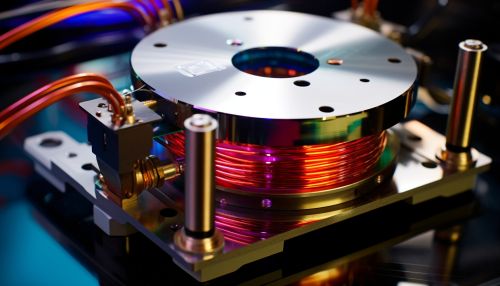The Physics of Superconducting Quantum Interference Filters (SQIFs)
Introduction
Superconducting Quantum Interference Filters (SQIFs) are a type of superconducting device that utilize the principles of quantum interference to filter electromagnetic signals. SQIFs are a significant advancement in the field of superconductivity and have potential applications in a variety of fields, including quantum computing, telecommunications, and medical imaging.


Principles of Operation
SQIFs operate based on the principles of quantum interference, a phenomenon where quantum states can interfere with each other to produce constructive or destructive interference. In the context of SQIFs, the quantum interference occurs in the superconducting loops that make up the device. These loops are arranged in such a way that the magnetic flux through each loop can interfere with the flux through the other loops, leading to a unique filtering effect.
Design and Construction
The design and construction of SQIFs are complex processes that require a deep understanding of superconductivity and quantum mechanics. The primary components of a SQIF are the superconducting loops, which are typically made from a type of superconducting material known as a Josephson junction. These loops are arranged in a specific pattern, often a grid or array, to create the desired interference effects.
Applications
SQIFs have a wide range of potential applications due to their unique filtering capabilities. In the field of quantum computing, SQIFs could be used to create more efficient and reliable quantum bits, or qubits. In telecommunications, SQIFs could be used to filter out noise and improve signal quality. In medical imaging, SQIFs could be used to enhance the resolution and sensitivity of imaging techniques such as MRI.
Challenges and Future Research
Despite the potential of SQIFs, there are several challenges that must be overcome before they can be widely adopted. These include issues related to the fabrication of the superconducting loops, the stability of the quantum interference effects, and the integration of SQIFs into existing technologies. Future research in this area is likely to focus on addressing these challenges and exploring new applications for SQIFs.
